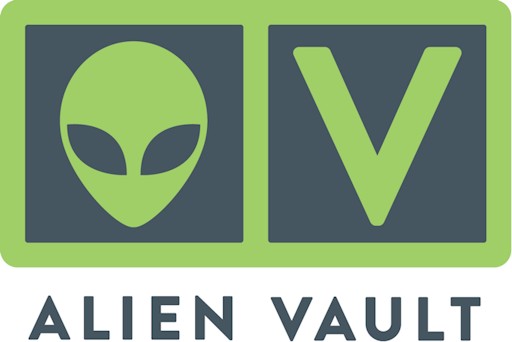
Over the past six years, we have had our share of PCI-DSS experiences across different verticals. Unlike other standards, companies each have their own unique PCI journey to compliance, due to the type of business they have in regards to storing, processing and transmitting credit card information.
Payment gateways usually have a challenge in securing stored credit card information. Here we identify the areas and types of storage and the option for securing this data – usually with encryption. The good news is that most payment gateways do not have many physical locations in scope, so we are generally looking at maybe one main site and one DR site, or two at most. This helps significantly.
BPOs or outsourced companies are another animal altogether. These are generally multi site projects, with various types of interactions with credit card information – usually phone, or MOTO (mail order, telephone order).
Banks are probably the top of the food chain in terms of complexity. Not only do they have hundreds of sites which are in scope, they also have storage of card data all over, as well as ATMs in scope in different branches.
Somewhere in between, we have the retailers. Not the e-commerce only retailers but traditional retailers. And here, in this layer of retailers, choke full of credit card and personal information, the hackers ply their trade.
Target (ironically the target of one of the largest information heist in history), Neiman Marcus, Home Depot, PF Chang’s, even Wendy’s – these were all hit with credit card breaches, resulting in millions upon millions of credit card information siphoned off into the jungles of the Dark Web. Why?
In general, hackers view Retailers (and hospitals) as easy targets. One example is where hackers ship a box full of new POS (point of sales) devices to the retailer outlets with a note from the Chief Operating Officer that these are devices to be installed and used from here on due to security or upgrade concerns – and once installed, these POS devices start hijacking credit card information in behalf of the hackers. A similar vector of attack is to infect the POS updates with malware and once the malware (like BlackPOS) is installed, it’s open season.
For the Target case, 40 million credit/debit cards were lost through POS. The reality was that the hackers breached Target’s main network first and accessed the database. Thanks to PCI, their database were encrypted and instead of hacking the keys, the hackers decided to go to the source (the POS devices). If the data in the databases was not encrypted, the damage would have been much, much more (we are looking at 70+ million).
PCI has stringent considerations for the security of POS, including software and hardware checks, as well as physical location checks. This is why retailers going through PCI is facing such a hard time. Some of the main issues are:
a) Retailers are underfitted for security. I am not sure if there is such a word underfitted – but in most cases, budgetary concerns are usually the reason why there is so little investments in security systems for retailers. The focus is on efficient transactions, and often efficiency and security are strange bedfellows. While millions are spent on customer relationship management tools, and systems to predict customer buying habits and big data solution, the backend hardware are outdated – we have seen XP and its variants still going strong in some retailers.
b) Inventory is haphazard. Some retailers grow, and in growing they do not keep stock of their internal inventory of systems. Some customers we go into have a very rudimentary excel sheet dated back to 2009 for their systems inventory, that is inherited several times by different IT administrators who seem to be going in and out of the company.
c) Like b, IT admin staff in retailers generally do not stay long. While some of the have good intentions in implementing certain structures and projects, these get lost along the way as new staff replaces them.
d) Location, location, location. In security, more locations, more problems. We see main branches carrying out good security practices but replicating along 85 branches in the country is a different story. In most attacks, hackers might infiltrate through a smaller branch with less focus on security and less education on preventing breaches.
e) Technical considerations. Most retailers we see have rudimentary effort in securing the network. Perimeter wise, we have seen a conglomerate of firewalls from yesteryears that no longer have any updates – and a plethora of free security software that does not have any auto-updates on signatures and in some cases, are spyware themselves. The network itself is usually flat (because of efficiency) and this brings in a huge amount of scope when your database is next to your ERP and accounting system that is being connected by a 100 of junior staffs with their desktops running XP.
There are many reasons why retailers are now prime target for PCI breaches. How do we avoid these breaches?
Well, you can’t. You can deter, but you cannot fully remove the risk of breaches. PCI helps a lot but as of now, there is no silver bullet to resolve security completely, except to unplug everything and set up a pen and paper store like back in the Wild West. But where PCI comes in – physical location security, POS security, network and database security – these are all critical areas where retailers can start with. Some first steps for retailers:
– Set up a proper inventory of systems: In my University in Western Australia, there is a huge engraving on one of the main halls: KNOW THYSELF. We generally use that advice a fair bit especially when we have had a fair bit of alcohol in the Beer Parties, while stumbling back to our dorms. But in order to know what we are up against, we need a proper inventory of what we have and set about securing these systems.
– Secure the perimeter: Firewalls and IDS/IPS are important here to ensure that attacks are sorted out and abnormal traffic behaviour is properly caught.
– Segment the network: While Segmenting is not for everyone, the security benefit here is considerable. Databases which are critical systems should not reside on the same network as your junior associate’s desktop, especially one who spends half his/her time downloading music or watching youtube. An analogy here is simple: when you put a healthy person in a room with a sick person, the sick person doesn’t get well, the healthy person gets sick.
– Eyes on everything: We can’t iterate enough how important monitoring is in retailers. A good security information and event monitoring (SIEM) system is KEY to their security. Because of the lack of security personnel, the SIEM takes away a lot of these manual responsibility in tracking down strange and abnormal events. If a SIEM was set up properly in the Target case, they would have realised that one of their printer spooler device was sending out FTP packets out from the network into another system in the internet.
– Test, test and retest: Test your systems for vulnerabilities. You don’t need to spend truckloads on penetration testing if you don’t want to. Scanning using a Nessus scanner or even OpenVas will be useful as a first step. If a system is not patched, patch it. If you are still using Windows XP, seriously consider upgrading it.
– Finally, educate the users: While this has become a mantra for consultants and trainers, it’s still true. The weakest link in the security killchain is between the keyboard and chair. That’s the person. Security awareness training is key. While firewalls, email filters and Intrusion detection systems can go a long way, the security infrastructure is compromised by one executive clicking on an email attachment with the word: “Watch this Cat play the piano!”. Boom. Welcome malware, welcome ransomware, welcome sleepless nights for IT.
In summary, PCI-DSS establishes good and practical security practices for retailers. It might not be cheap, but once you have been hit by a ransomware or have your data pilfered, the fallout costs would be even more significant. For retailers looking to start off your PCI journey, or who need assistance on your ongoing one, please email us at pcidss@pkfmalaysia.com and we will get back to you immediately.


